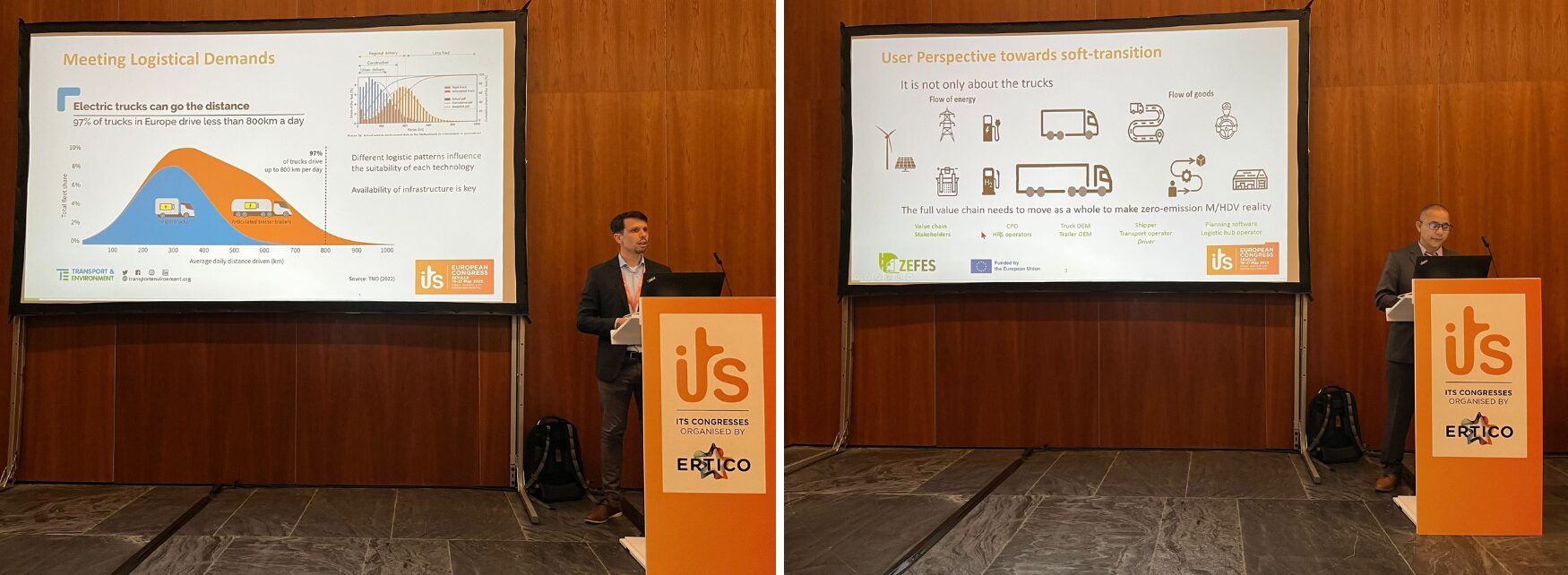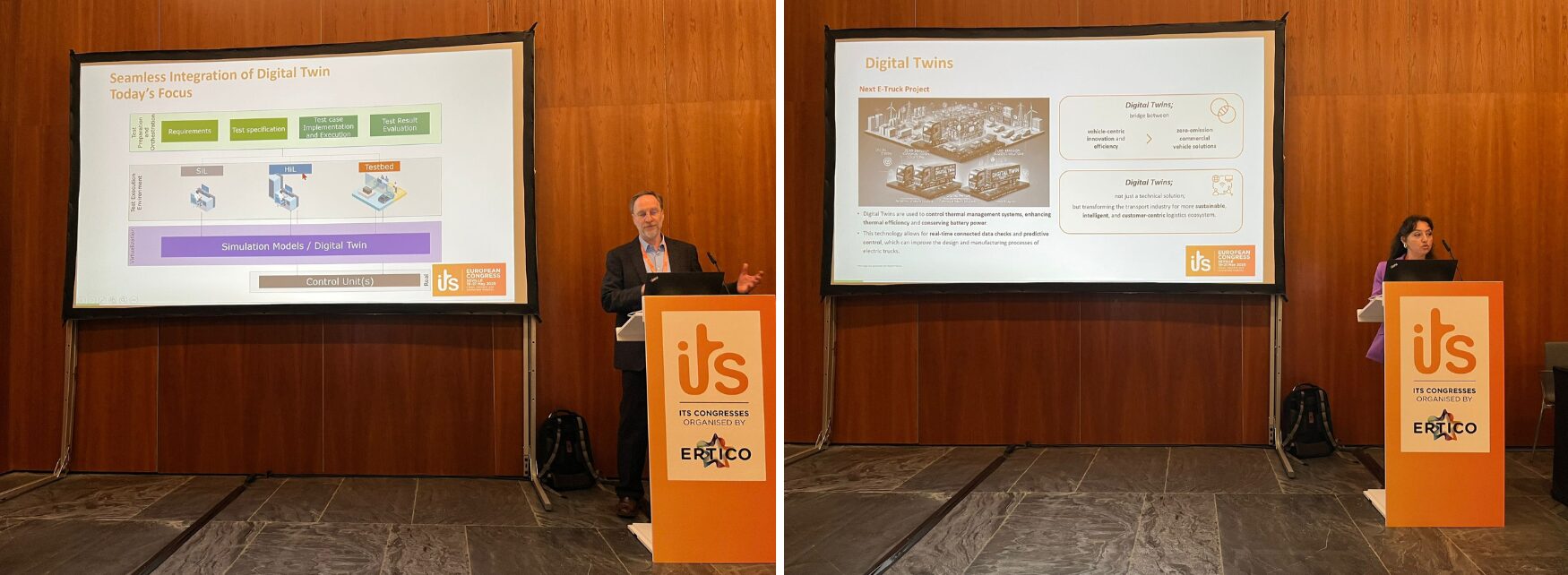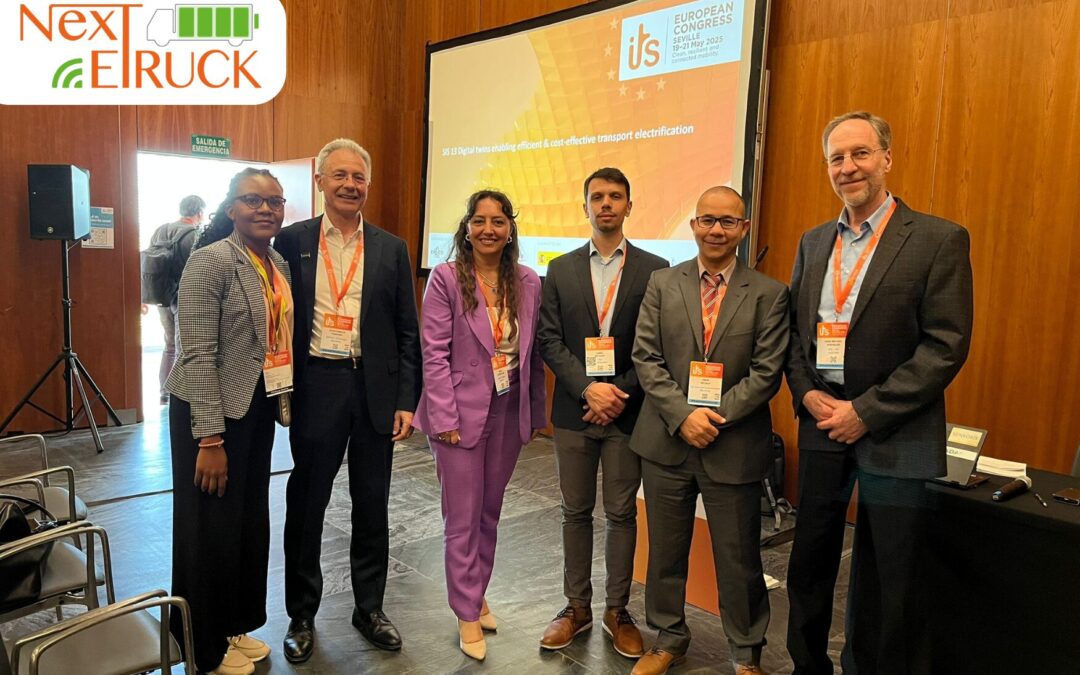This week, NextETRUCK participated in the ITS European Congress 2025, one of Europe’s premier platforms for showcasing innovative transport solutions. Held this year in Seville, the Congress brought together industry leaders, researchers, and policymakers to explore the future of mobility. For the NextETRUCK project, which aims to advance the electrification of medium-duty trucks, this event provided a critical stage to demonstrate the value of digital twin technology in transforming commercial transport. As part of their contribution to the event, NextETRUCK hosted Special Interest Session 13 (SIS 13) – “Digital Twins: Enabling Efficient and Cost-Effective Transport Electrification.” This dynamic session brought together key project experts to explore how digital twin technologies are reshaping the freight sector.
Digital twins are at the core of NextETRUCK’s approach to tackling the freight sector’s pressing challenges. As Jean-Charles Pandazis (ERTICO ITS-Europe) outlined in his introduction to the session, the volume of freight is set to increase significantly, pushing the industry to adopt innovative strategies to stay sustainable. The session highlighted the vital role of digital twins in evolving vehicle design, optimising logistics operations, and enhancing user acceptance of electric transport solutions.
Camiel Beckers (TNO) emphasised that achieving the EU’s Fit-for-55 targets is technically feasible but hinges on robust charging infrastructure. He pointed to a real-world use case in Amsterdam where battery electric trucks (BEVs) were deployed. The experience underscored the complexity and learning curve involved in implementing such technologies. Digital twins proved instrumental in modelling scenarios, improving planning, and supporting decision-making. He also discussed the need for ultra-fast charging to make long-haul electric trucking viable and how NextETRUCK is addressing these infrastructure and vehicle design challenges.
From the user perspective, Omar Hegazy (VUB) stressed that infrastructure, vehicle design, and digital tools must be integrated into a seamless, secure, and cost-effective service. He showcased a digital twin system developed within the ZEFES and NextETRUCK projects that supports mission planning, vehicle selection, and route optimisation. These tools help end-users and OEMs identify the most efficient and appropriate vehicle configurations for specific use cases, with attention to cost and cybersecurity.

Helin Özdemir Kan (Ford Otosan) detailed how digital twins are transforming truck design, fleet management, and predictive maintenance for OEMs. In NextETRUCK, digital twins play a critical role in thermal management systems, enabling smarter and more energy-efficient control strategies. These project-specific solutions are poised for broader application as the technology matures and scales.
Finally, Hans-Michael Koegeler (AVL) offered the supplier perspective, noting a shift from hardware-focused development to software-driven innovation. Digital twins now support functional testing and system optimisation, enhancing the overall value chain from design to deployment.

In addition to the session, NextETRUCK was also represented at the ERTICO stand to engage with attendees in the Exhibition area. This presence allowed direct interaction with industry professionals, policymakers, and researchers, fostering valuable discussions on the project’s goals, technologies, and expected impact.


